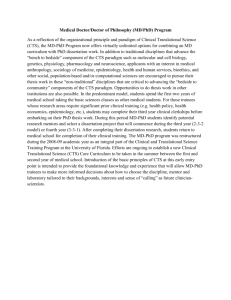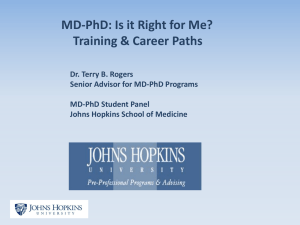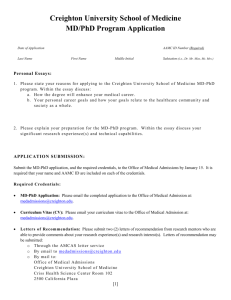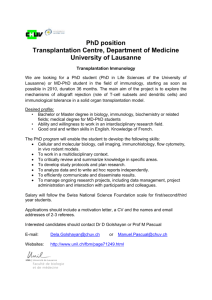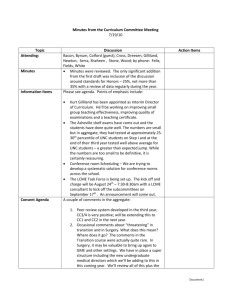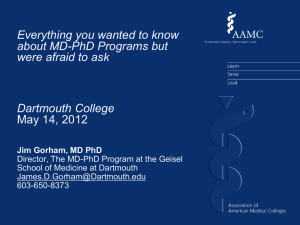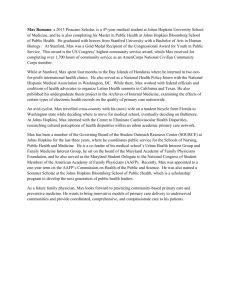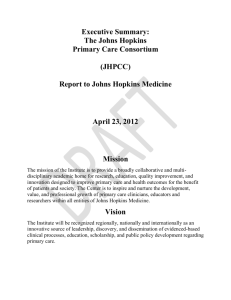Preparation and Success of Applicants to MD/PhD Programs from
advertisement
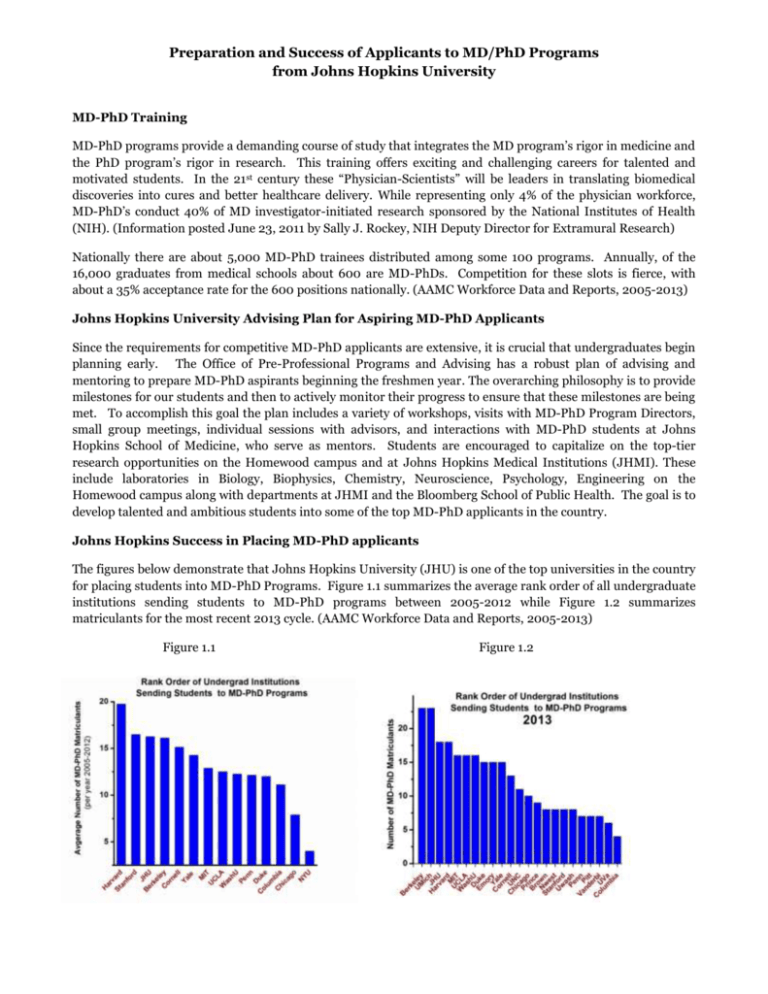
Preparation and Success of Applicants to MD/PhD Programs from Johns Hopkins University MD-PhD Training MD-PhD programs provide a demanding course of study that integrates the MD program’s rigor in medicine and the PhD program’s rigor in research. This training offers exciting and challenging careers for talented and motivated students. In the 21st century these “Physician-Scientists” will be leaders in translating biomedical discoveries into cures and better healthcare delivery. While representing only 4% of the physician workforce, MD-PhD’s conduct 40% of MD investigator-initiated research sponsored by the National Institutes of Health (NIH). (Information posted June 23, 2011 by Sally J. Rockey, NIH Deputy Director for Extramural Research) Nationally there are about 5,000 MD-PhD trainees distributed among some 100 programs. Annually, of the 16,000 graduates from medical schools about 600 are MD-PhDs. Competition for these slots is fierce, with about a 35% acceptance rate for the 600 positions nationally. (AAMC Workforce Data and Reports, 2005-2013) Johns Hopkins University Advising Plan for Aspiring MD-PhD Applicants Since the requirements for competitive MD-PhD applicants are extensive, it is crucial that undergraduates begin planning early. The Office of Pre-Professional Programs and Advising has a robust plan of advising and mentoring to prepare MD-PhD aspirants beginning the freshmen year. The overarching philosophy is to provide milestones for our students and then to actively monitor their progress to ensure that these milestones are being met. To accomplish this goal the plan includes a variety of workshops, visits with MD-PhD Program Directors, small group meetings, individual sessions with advisors, and interactions with MD-PhD students at Johns Hopkins School of Medicine, who serve as mentors. Students are encouraged to capitalize on the top-tier research opportunities on the Homewood campus and at Johns Hopkins Medical Institutions (JHMI). These include laboratories in Biology, Biophysics, Chemistry, Neuroscience, Psychology, Engineering on the Homewood campus along with departments at JHMI and the Bloomberg School of Public Health. The goal is to develop talented and ambitious students into some of the top MD-PhD applicants in the country. Johns Hopkins Success in Placing MD-PhD applicants The figures below demonstrate that Johns Hopkins University (JHU) is one of the top universities in the country for placing students into MD-PhD Programs. Figure 1.1 summarizes the average rank order of all undergraduate institutions sending students to MD-PhD programs between 2005-2012 while Figure 1.2 summarizes matriculants for the most recent 2013 cycle. (AAMC Workforce Data and Reports, 2005-2013) Figure 1.1 Figure 1.2 In the past eight years, Johns Hopkins has placed an average of 16.5 matriculants into MD/PhD programs annually. This ranks JHU third in the country, below Harvard and Stanford. For the entry year 2013, JHU matriculated 18 students into MD-PhD programs, tying with Harvard, and following Berkeley and Michigan. Figure 1.3 Interest in pursuing MD-PhD studies has been consistent, with applicant numbers ranging from 35-40 per year. Figure 1.3 applicants from JHU and matriculants from JHU to MD-PhD programs for the 2010-2013 application cycles. For the entry year 2013, of the 39 JHU applicants to MD-PhD programs, 18 (46%) matriculated to MD-PhD programs. It should be noted, however, that a total of 30 (77% of MD-PhD applicants) matriculated to either MD-PhD -- or -- MD programs. Johns Hopkins Placement into MD/PhD Programs Johns Hopkins MD-PhD applicants matriculate at top ranked MD-PhD programs across the country. Figure 1.4 summarizes the top 20 MD-PhD programs who matriculated JHU graduates between 1997 and 2012. The top three MD-PhD programs joined by JHU applicants were Johns Hopkins University School of Medicine, Washington University School of Medicine and University of Pennsylvania Medical School. Figure 1.4 In Closing MD-PhD candidates are being prepared for careers in which they will spend most of their time doing research, in addition to caring for patients. The career is “busy, challenging, rewarding, and offers opportunities to do good for many people by advancing knowledge, developing new treatments for diseases, and pushing back the boundaries of the unknown” (Association of American Medical Colleges, 2014). Office of Pre-Professional Programs and Advising February 2014
